St. Michael’s Hospital, South East Toronto Stroke Network teach school kids to recognize the signs of stroke

Sign up for the Unity Health Toronto newsletter, a monthly update on the latest news, stories, patient voices and research emailed directly to subscribers. If you haven’t subscribed yet, you can do that by clicking here.
In a school gymnasium on a sunny June morning, the South East Toronto Stroke Network Team, including St. Michael’s Hospital Neurologist Dr. Manav Vyas, welcomes the newest and youngest additions to the hospital’s stroke-fighting team: dozens of eager Grade 1, 2 and 3 students.
Vyas leads a group of 96 students through a pledge. Together, they promise to educate their friends and family about the signs of stroke and to call 911 if someone is having a stroke.
“I pledge to be a FAST Hero, to spread awareness and save lives, because every second counts and together we can make a difference!” the children swear in unison.
The students, from Thorncliffe Park Public School, recently completed the FAST Heroes program. The international education program teaches young children that they can save lives by learning the signs of stroke and stroke prevention. Stroke is the third leading cause of death in Canada, and the leading cause of disability.
June is #StrokeAwarenessMonth. Stroke is a medical emergency. Learn to recognize the FAST signs of stroke and call 911 if you or someone with you is having one. @HeartandStroke pic.twitter.com/GZwsnsI4Ft
— Unity Health Toronto (@UnityHealthTO) June 3, 2024
Designed for students between the ages of five to nine, the FAST Heroes mission is to have children spread these life-saving lessons to their parents, grandparents and loved ones, helping to prevent future strokes and stroke death and disability.
While the program has been deployed around the world, this was the first time FAST Heroes had been taught in Toronto. A total of nine classes in the Thorncliffe area completed the program, which was coordinated by the South East Toronto Stroke Network (SETSN), located at St. Michael’s Hospital, the Regional Stroke Centre for the region.
Watch: CTV Toronto: School students learn to recognize the signs of stroke:
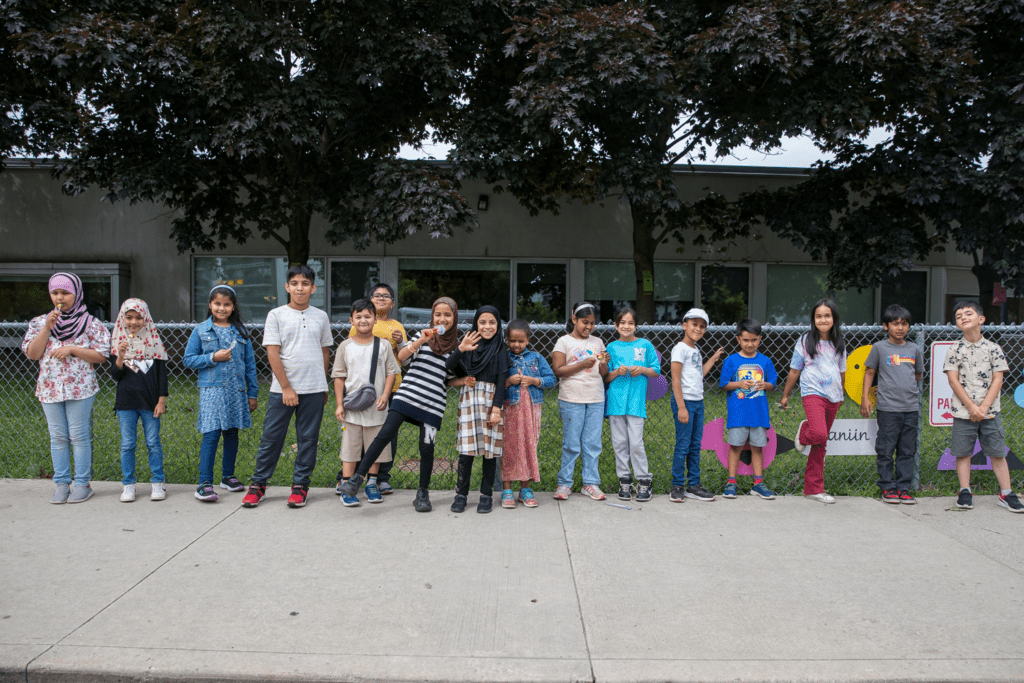
It was important to bring the education program to the highly diverse and densely-populated Thorncliffe neighbourhood, said SETSN Regional Director Fatima Quraishi. Thorncliffe Park School itself is a microcosm of the community – it is one of the largest elementary schools in Canada, with close to 1,300 students in grades one through five, representing 47 different countries.
“The South East Toronto Stroke Network has made it a priority to focus on stroke prevention and awareness in our region, which includes the Thorncliffe Park and Flemingdon area,” Quraishi said, noting that data from a nearby community hospital show stroke volumes increased 400 per cent in the last year alone.
“We wanted to come out to the community, which has a high immigrant population, and do education and outreach because we weren’t sure if public health messaging was reaching them.
“Our vision at the Toronto Stroke Network is ‘Fewer strokes, better outcomes.’ We want to reduce the number of strokes, but we can’t prevent all of them, so we want to educate the community so they can identify a stroke and call 911 right away. This can be the difference between life and death and the type of recovery you have.”
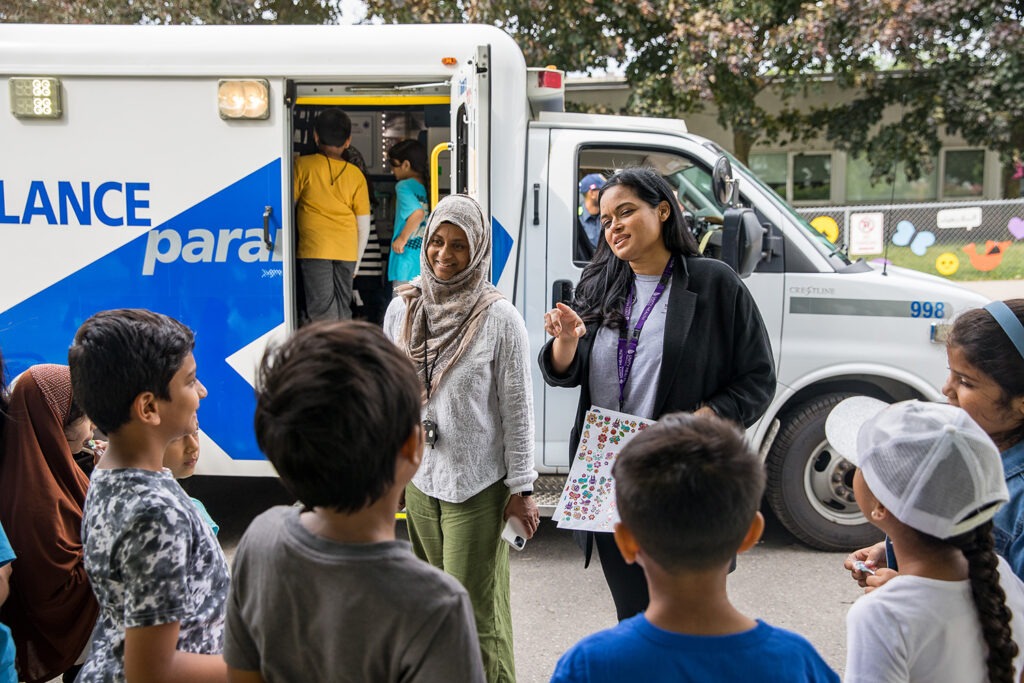
The SETSN team organized several fun activities for the students, including a wheelchair relay race that simulated stroke symptoms, a stroke-trivia game with prizes, ambulance tours and an art-making station. The plan is to post the students’ art work in the community for further public education.
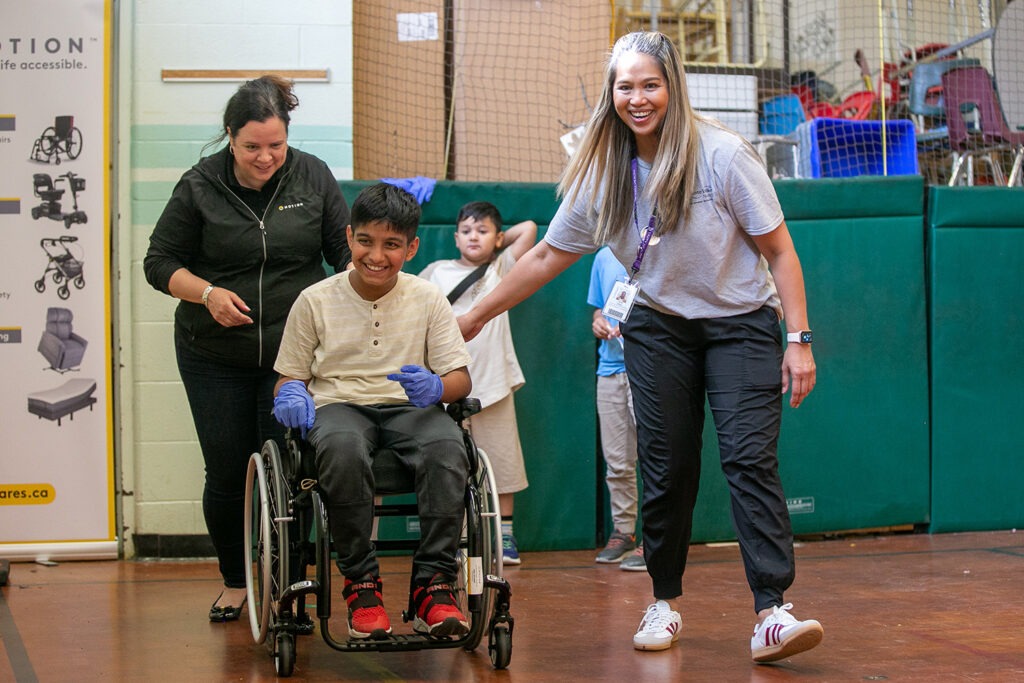
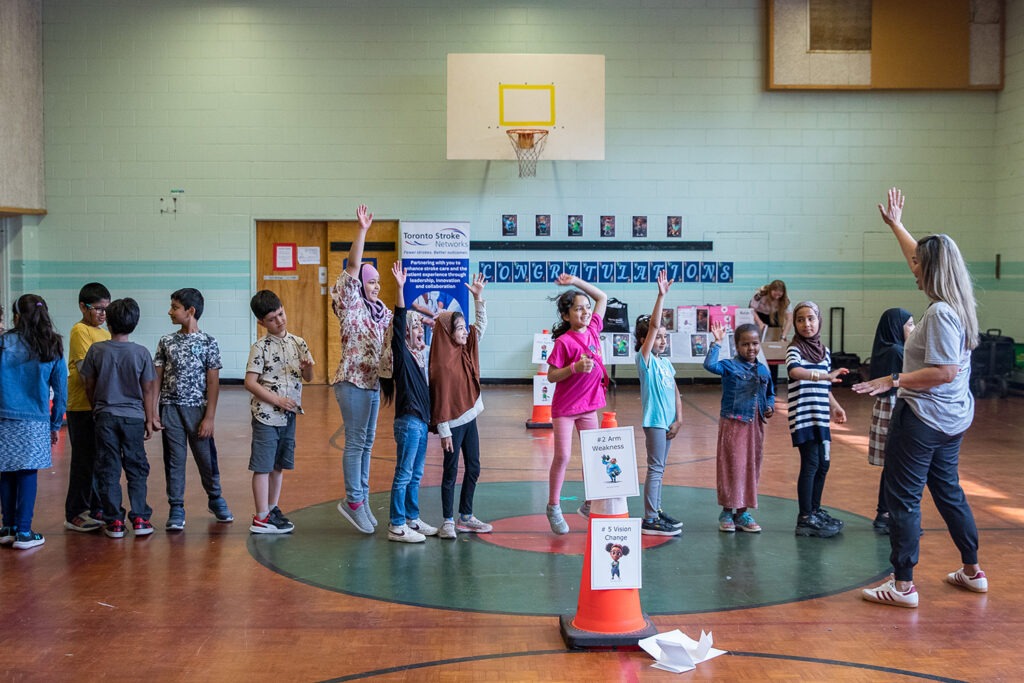
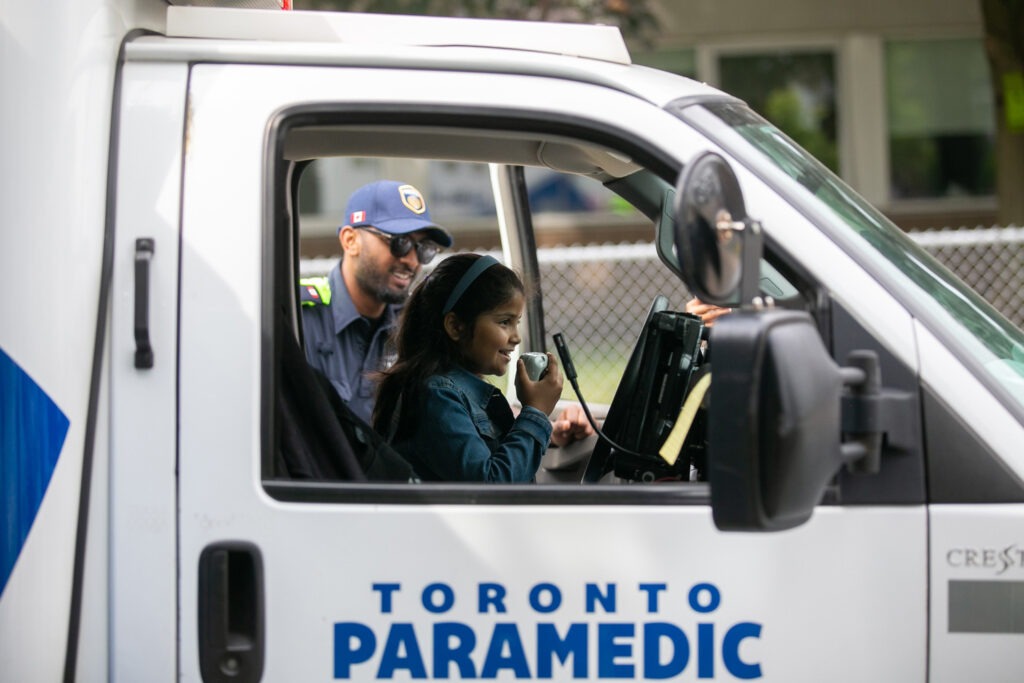
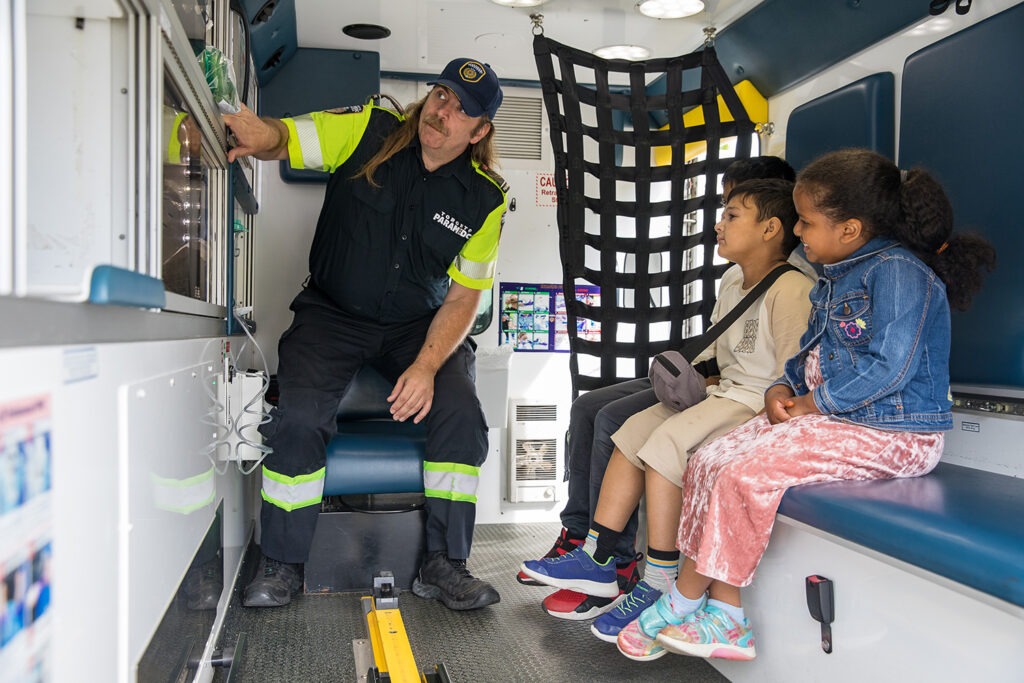
Toronto Paramedic Services were available to give ambulance tours and blood pressure checks.
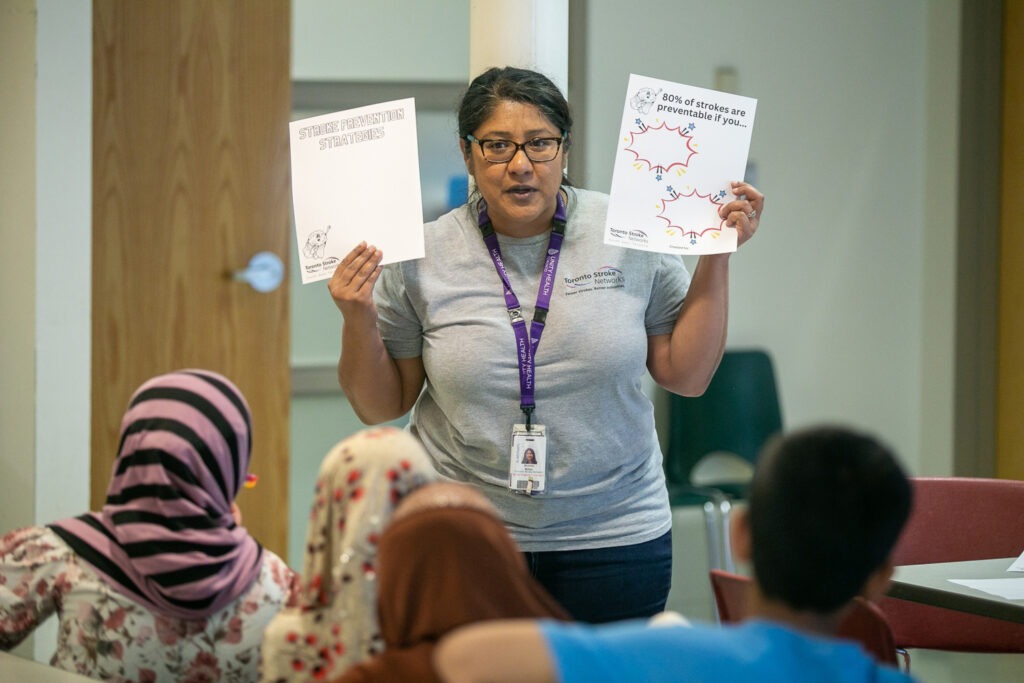
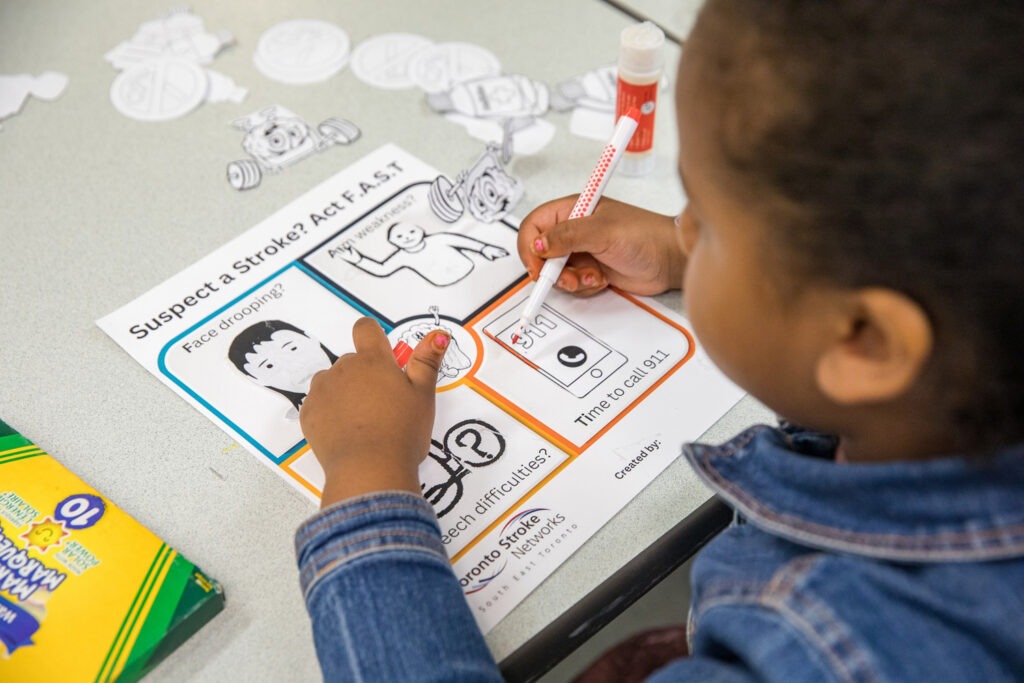

At the trivia station, Vyas quizzes a group of students to test their newly acquired knowledge.
“What is something you can do to help prevent a stroke?” he asks one student. “Watch TV, eat candy or exercise every day?”
“Exercise every day,” answers the student, easy-peasy, with a smile.
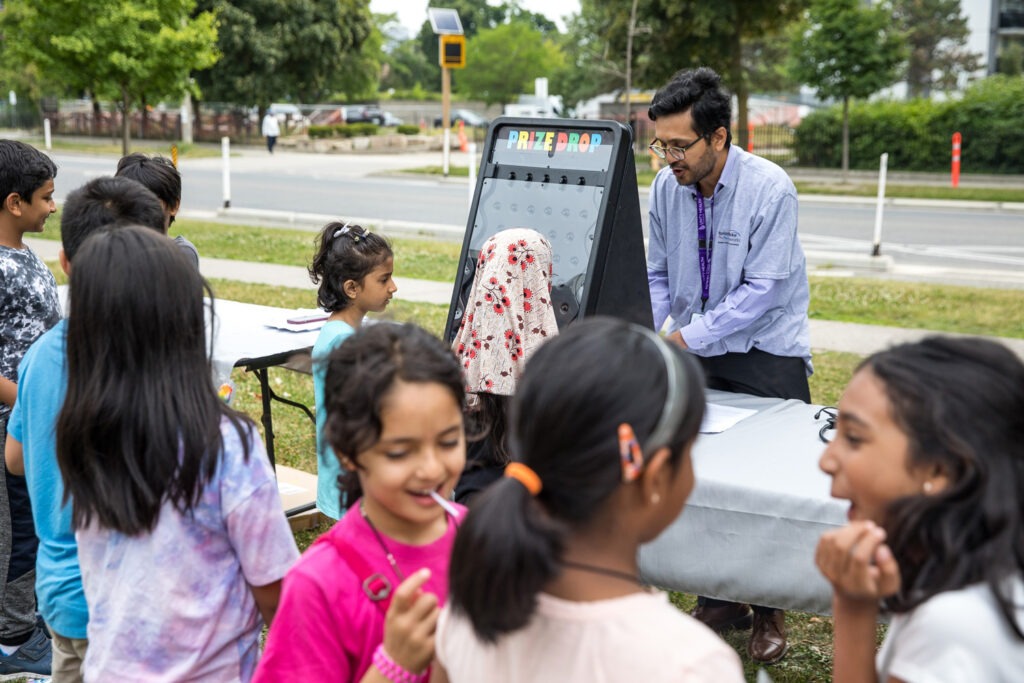
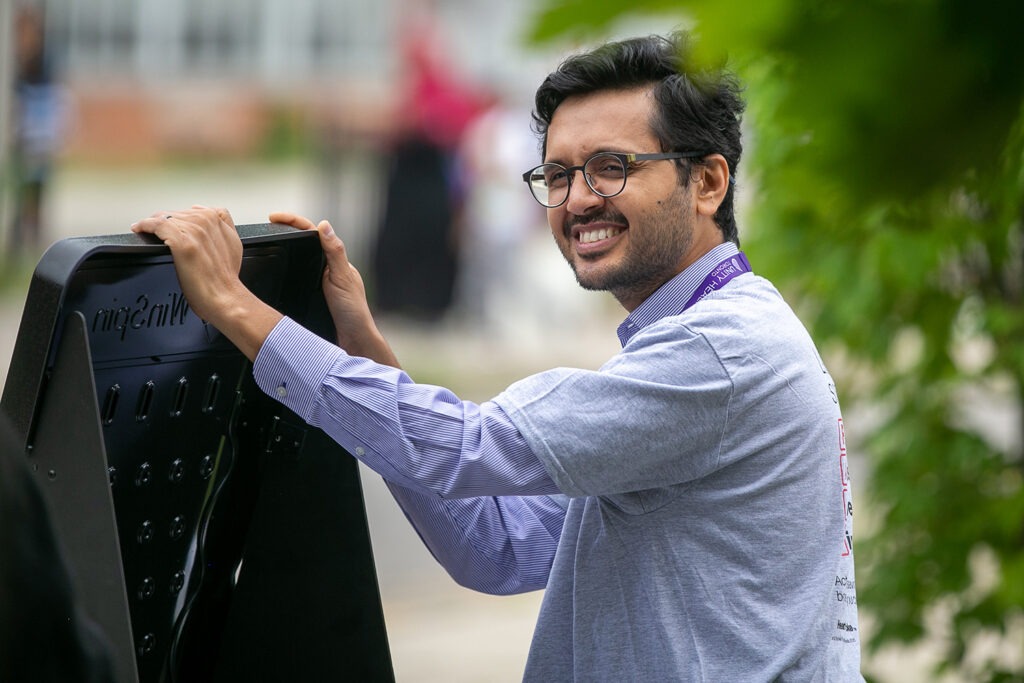
Neurologist Dr. Manav Vyas is also a researcher whose work focuses on stroke risk among immigrant groups.
Vyas was excited to join the SETSN team in Thorncliffe and engage with the kids. In addition to his work as a neurologist, Vyas is also an accomplished researcher who investigates stroke risk among immigrants in Canada. His research shows that newcomers to Canada are generally healthier than Canadians at the time of their arrival. However, immigrants’ stroke risk increases the longer they stay in Canada.
Importantly, he says, his research also indicates that many immigrants don’t call 911 when a stroke happens.
“My research has shown that many immigrants bargain their health for economic stability after moving to Canada. In doing so, they don’t seek primary care and accumulate risk factors that can lead to stroke,” he said.
“Coming into communities like Thorncliffe is important. There are many immigrants here and many may not know how our healthcare system works or where to go if they’re having a stroke. By targeting their children, who attend school regularly, the kids can be the ones who bring this info home and teach their parents.”
The team ends the celebration by thanking the school teachers, handing out certificates to the kids, and distributing cupcakes for all to enjoy.
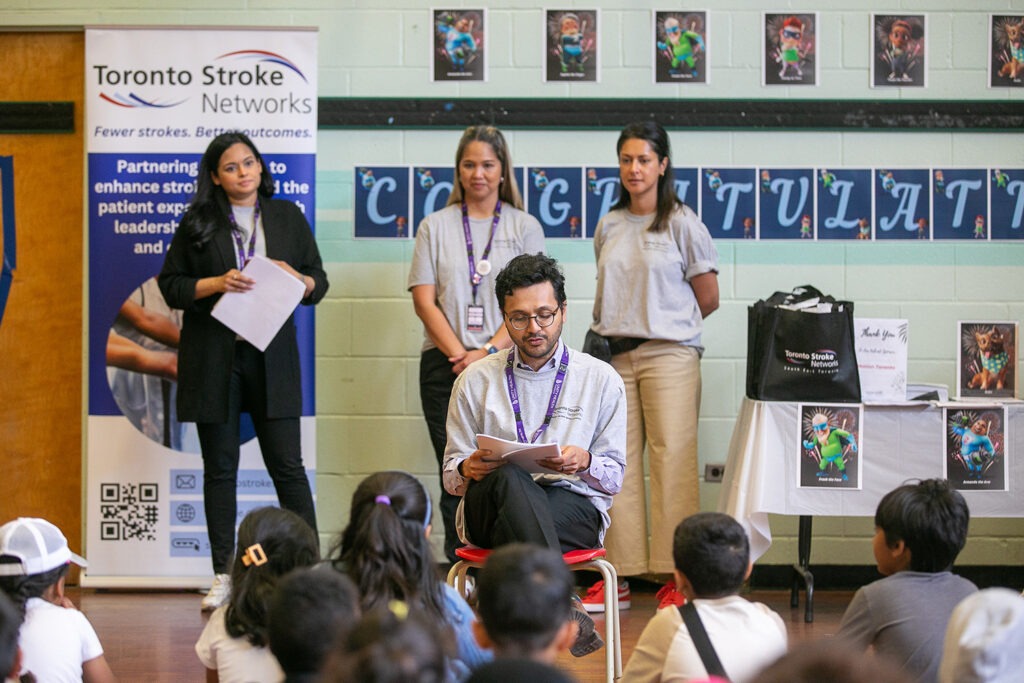
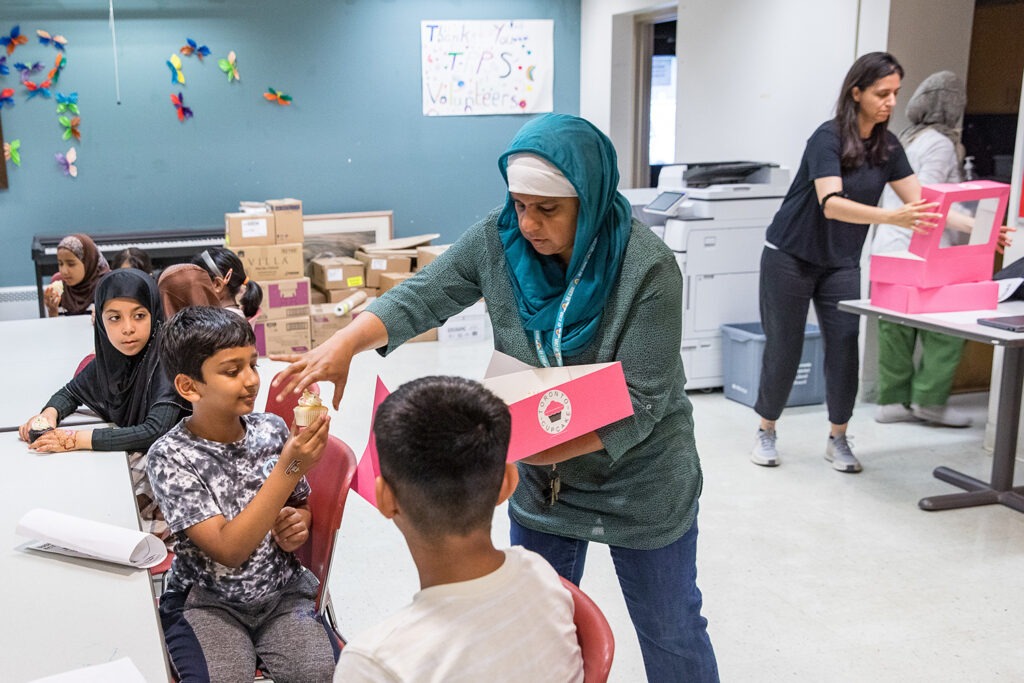
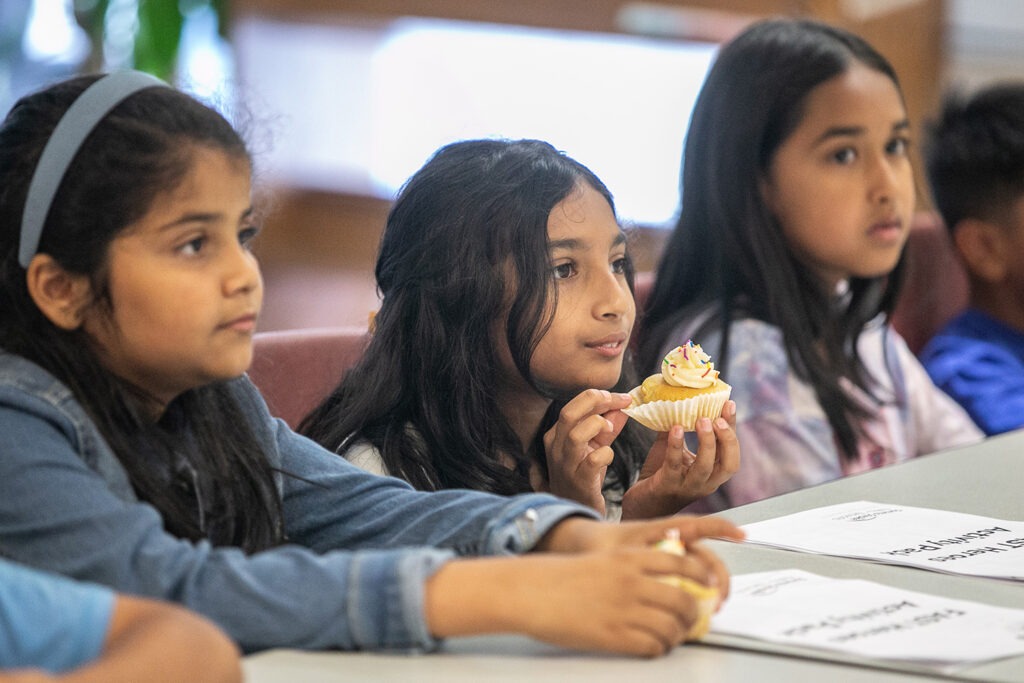
The SETSN team recognizes the children’s accomplishments with certificates and cupcakes.
The students leave the gym buzzing with energy, cupcakes and certificates in hand. There’s only a few days left of school and they’ve got big plans for the summer, including road trips, beach days and lazy mornings for sleeping in and video games. Wherever they go, they’ll be armed with new knowledge about how to protect their loved ones from stroke.
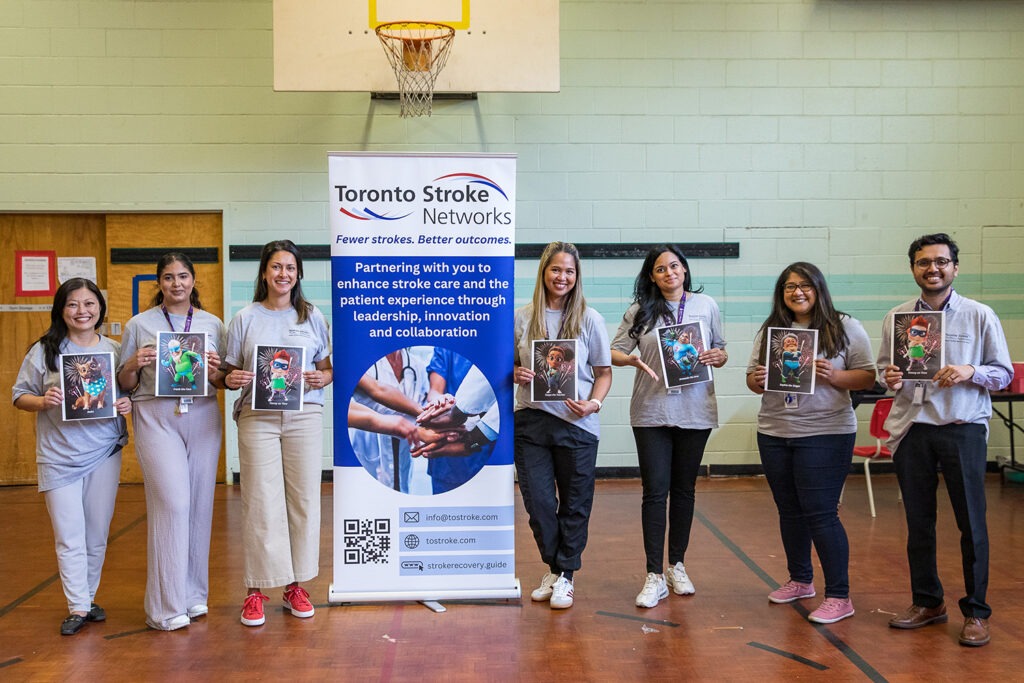
*Unity Health Toronto and the South East Toronto Stroke Network thank the students and staff at Thorncliffe Park Public School for welcoming us into your school. Have a great summer!*
By Marlene Leung
Photos by Eduardo Lima
